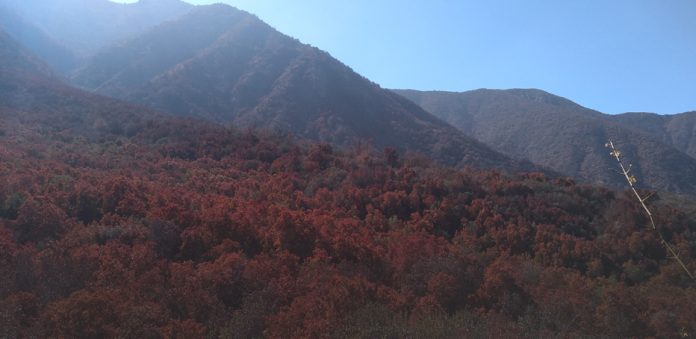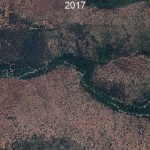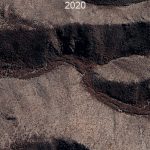Alejandro Miranda, Antonio Lara, Adison Altamirano, Carlos Di Bella, Mauro E. González & Jesús Camarero
Something is happening in the sclerophyllous forests of central Chile: its trees are ‘browning’ from the megadrought that has persisted since 2010. Although a characteristic of these forests is their ability to tolerate low precipitation, the uninterrupted sequence of dry years, with deficits ranging between 25% and 45%, has led to what is known as browning.
This conclusion was reached after analyzing a 13,000-square kilometre area in central Chile that is considered a global biodiversity hotspot and compiling a greenness index for 2000-2017 using data from the MODIS satellite sensor. The satellites received a redder signal from areas where a greener signal once predominated, allowing the true colour to be constructed, which indicates a loss of leaves and branches, or even tree mortality.
Using this instrument, estimates found that one-third of the forests of the region showed a reduction in greenness owing to the lack of water, which reduces the photosynthetic capacity of the trees. However, greenery remained more stable at the bottom of ravines where the soil retains more moisture. This means that in drought conditions the availability of water in the soil is a more influential factor in maintaining greenness in forests than the level of solar radiation received.
Images obtained from Google Earth, where one can observe the change in tones from 2017 to 2020.
One of the effects of browning is that it leaves the sclerophyllous forest more vulnerable to the indirect impacts of climate change, such as changes in ground cover, biological invasions, increasing number of forest fires, deforestation, and more extreme events. In fact, all of these can occur simultaneously, generating synergies provoked by other processes that affect the structure of forest communities, modifying, for example, the water regime in the ecosystem and nutrient cycle in the soil, as well as affecting the biodiversity that sustains them.
Because of this, we need to understand the functioning and resilience of the sclerophyllous forest and its ability to withstand climate change and variables such as drought and heatwaves – key points for the ecological conservation and restoration of these remnant ecosystems. This is even more pressing when we consider that this analysis reports effects up to summer 2017, and the drought has persisted to the present, so its effect may be even greater.
Additionally, future studies should assess the post-drought recovery period to learn about resilience processes, including productivity, growth, mortality, regeneration, and changes in species composition. Along with this, it should be noted that some environmental conditions can act as refuges against drought and can offer an opportunity and provide criteria for selecting sites with a higher priority for restoration/conservation under climate change scenarios.
The sclerophyllous forests have been heavily deforested in the past and are still threatened today by the expansion of farmland, housing projects, infrastructure, and wildfires. Given the uncertain future of these forests in the face of climate change, it is crucial to prioritize their protection by avoiding land use changes from investment projects and preventing forest fires. They are one of the most highly threatened components of Chile’s natural heritage and it would be very difficult to recover them once destroyed under the current climate scenario.
Cover image: Constanza Soto
Reference
Miranda, A., Lara, A., Altamirano, A., Di Bella, C., González, M.E., Camarero, J. 2020. Forest browning trends in response to drought in a highly threatened Mediterranean landscape of South America. Ecological Indicators, 115, 106401








